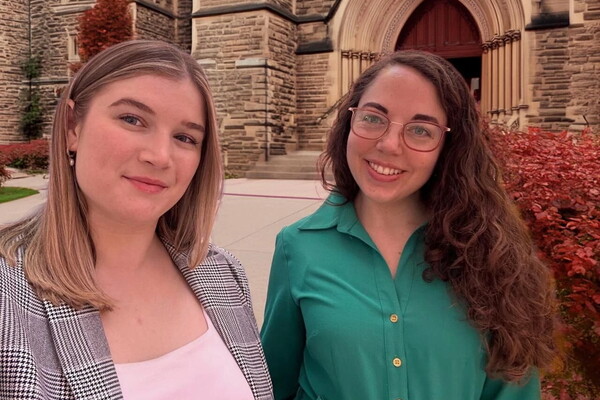Mobile Menu
- Education
- Research
-
Students
- High School Outreach
- Undergraduate & Beyond: Community of Support
- Current Students
- Faculty & Staff
- Alumni
- News & Events
- Giving
- About

A new study from University Health Network and the University of Toronto has found that caregiver characteristics can have a significant effect on the most frequently used measure of severity in Alzheimer’s disease.
The study, recently published in the journal Nature Aging, has implications for how researchers interpret clinical trial results for new treatments and suggests that more objective measurements are needed.
“The Clinical Dementia Rating Sum of Boxes scale is a very important measurement, but the outcomes that include a caregiver or ‘informant’ perspective give us an additional source of bias,” says Juan-Camilo Vargas-Gonzalez, lead author on the study who is a postdoctoral fellow in cognitive neurology at U of T and Toronto Western Hospital, UHN. “Part of what we need to think about is whether we want to have this kind of outcome as the primary or only outcome for clinical trials.”
Researchers and clinicians use the scale to stage the severity of Alzheimer's disease and how it changes over time. Higher scores on the scale, which runs from zero to 18, correspond to more severe disease. The scale reflects a patient’s cognition and function and is the primary endpoint in most clinical trials testing new drugs for Alzheimer’s disease.
Scores are based largely on information provided by both patients and ‘informants’ — often relatives of patients who come to clinical appointments.
Vargas-Gonzalez and his colleagues — which include Professor Carmela Tartaglia, a clinician-scientist at U of T’s Tanz Centre for Research in Neurodegenerative Diseases and investigator at UHN’s Krembil Brain Institute — noticed that a patient’s scores could vary significantly from appointment to appointment, depending on who was attending with them.
“We realized that for the same patient you can get a completely different picture depending on the informant,” says Vargas-Gonzalez. “Sometimes the difference between the two assessments is due to the progression of the disease over time, and that’s completely normal. But sometimes the only difference is the person coming with the patient to the appointment.”
Vargas-Gonzalez and the study team analyzed a large database of more than 20,000 Alzheimer's patients that includes their score and informant characteristics from nearly 50,000 medical assessments.
They found a patient’s scores were higher when the informant was female, was the patient’s child (compared to partner) and visited the patient daily or lived with the patient (compared to less frequent visits).
Tartaglia says the variation in the scores, which was as much as 0.65 points higher for caregivers who visited the patient daily, is similar to what researchers often see between experimental and placebo arms in AD clinical trial.
Clinicians could interpret such a change in score as the result of an effective medication or disease progression, not informant characteristics — which has implications for trial outcomes and treatment decisions.
“The effect is actually pretty significant because it's similar to the effect size you see between arms of most of the clinical trials in Alzheimer's disease. When you factor in the informant effect, and the variability you can see in a patient already because of their mood or pain or other factors, it introduces a lot of noise,” says Tartaglia.
“When you have a primary endpoint, the whole trial rests on that endpoint, so you want it to be free of bias. You want it to truly reflect the effect of the treatment on the patient, not who comes with them to an appointment.”
Nature Aging included an editorial about the study results, noting that the findings do not suggest that the scale should be abandoned, but rather that researchers and clinicians should interpret the results with caution.
Vargas-Gonzalez says that the results suggest researchers need to better understand the effect of the informant characteristics on the scale as well as develop more objective measures, such as biomarkers, to complement the scale.
“It is a very complex problem, and now we have shown that the problem exists,” he says. “This highlights that in the future we might need better outcome measures. These types of measurements will always have an additional source of variability and risk of bias that you don't have in a measurement like a biomarker.”
Tartaglia agrees that the research demonstrates the importance of choosing the right primary end-point in clinical trial design.
“My hope is that it will make the researchers and regulators think about clinical trial designs, and how we can incorporate more objective outcomes, which may change the way we do clinical trials for Alzheimer's disease,” she says.


